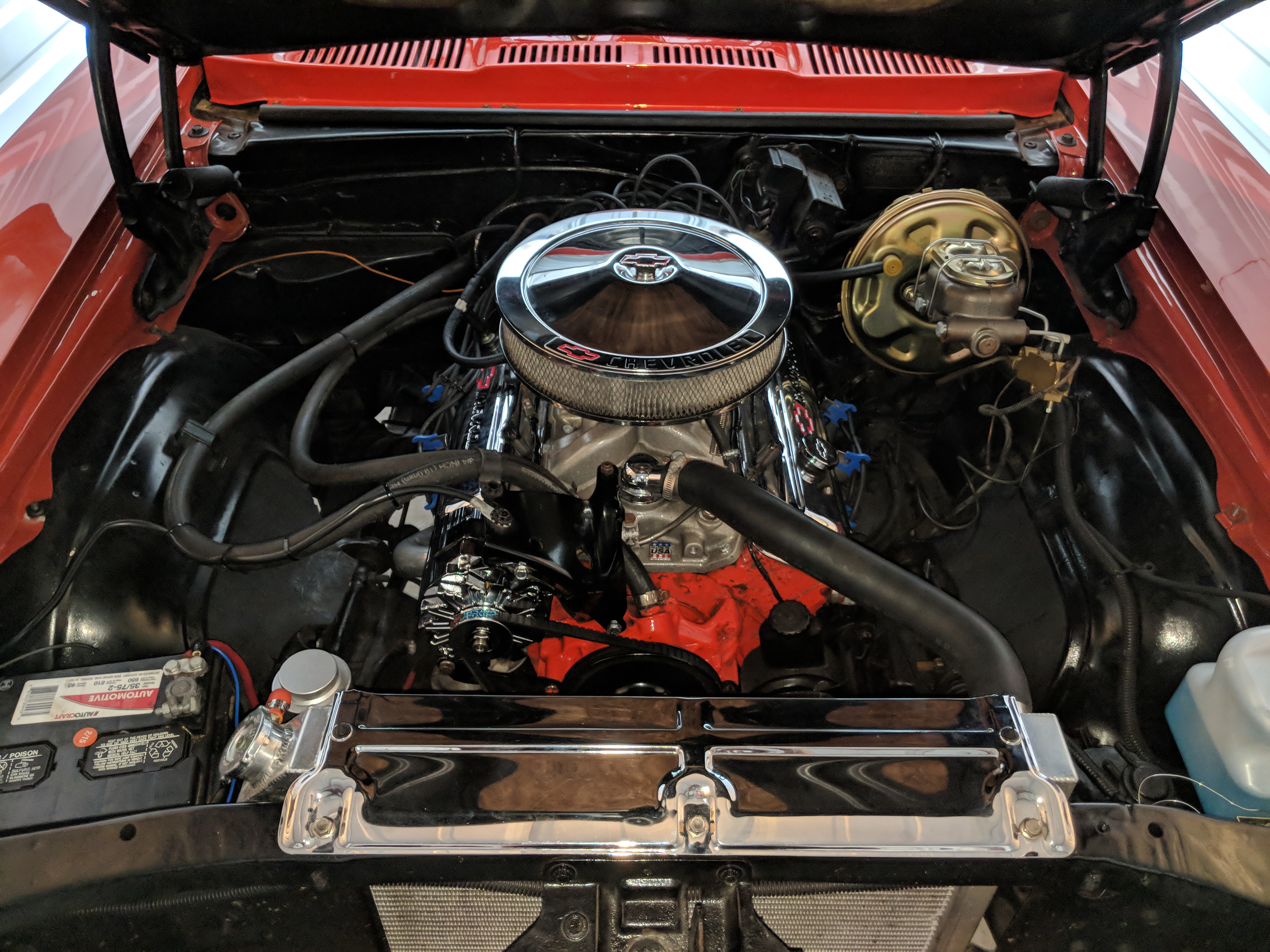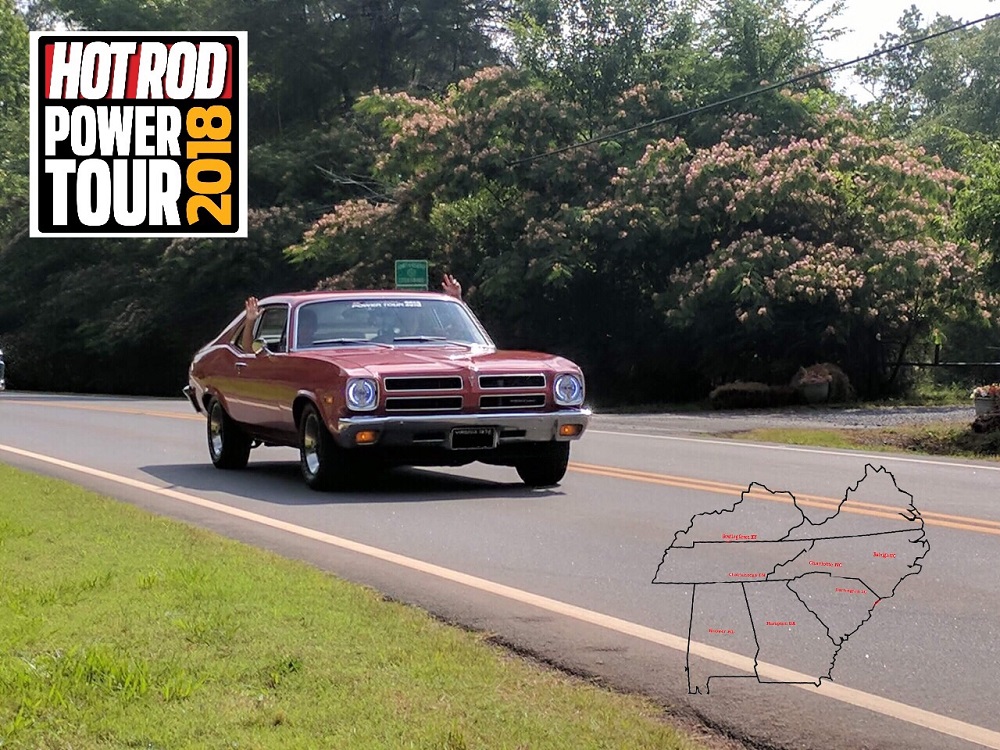For Fan Car Friday this week we bring you Jeff and his beautifully unique 72 Ventura II. Fan Car Friday is a segment where we want to share with the world the automobiles that our fans have. We have absolutely no affiliation/relationship with the cars, the build or the owners. This post was made with written consent from the owner.

“This 1972 Pontiac Ventura II was inherited by my wife from her godfather. The 1972 Ventura was purchased new in 1972 from Whitmore Buick Pontiac in West point VA.
Orginal owner up to the time the car was given to my Wife. The Ventura was garaged most all of it’s life and really driven to church on Sundays. The Ventura had only 41,000 orginal miles at the time she received the car. The car had been setting for about 15 years without being run and cared for when I towed the vehicle to our home.
Once the Ventura was in our care I begin the full restoration process with my many years of body shop mechanical experience. Approximately 2 years of full restoration the vehicle has been completed. In June of 2018 I took the Ventura on the Hot Power Tour for the 2500 miles tour around our beautiful USA ! The car is such a pleasure to drive.

Jeffrey wanted to dedicate this to his beautiful wife as they wanted to share the joy and story of this beautiful Ventura.

Any woman who will hand paint your intake is a keeper in our books.
The Pontiac Ventura is an automobile that was produced by Pontiac. The name was derived from Ventura, California. Until 1992, General Motors had an assembly plant that manufactured X-body models in the district of Van Nuys, Los Angeles at Van Nuys Assembly.
In 1971, Pontiac moved the name to their new X-body Nova clone, the Ventura II.
Ventura II production ran from 1971 to 1977. The “II” suffix was dropped after 1972, and the Phoenix name replaced Ventura in 1978. Engine offerings for the abbreviated 1971 model year included a 250 cu in. six cylinder or 307 cu in., only the 307 was available for the Sprint option in ’71. For 1972, a Pontiac-built 350 cu in. V8 with two-barrel carburetor was added to the option list and became the base V8 for 1973 and 1974. Transmission offerings consisted of a standard column-shift three-speed manual with options including a four-speed manual, two-speed automatic (with six-cylinder) or three-speed Turbo Hydra-Matic automatic (with V8s). The 1973 six-cylinder Ventura was the last Pontiac model to offer the two-speed automatic, a badge-engineered Chevrolet Powerglide, which was dropped completely from all GM cars and trucks after this model year in favor of the Turbo Hydra-Matic.
A Ventura Sprint option package was offered on two-door models 1971 to 1975, including three-speed transmission with floor shift and optional 350 cu in. V8 equipped four-speed, body color mirrors, custom carpeting, all-vinyl upholstery with either the standard bench or optional Strato bucket seats, Custom Sport steering wheel, blackout-grille trim, special striping, blackout grille, and 14×6″ (36 cm diameter, 15 cm wide) wheels.
In mid-1972, Pontiac introduced the limited production Ventura SD for the Southern California market as sort of a sporty-luxury compact to counter imported luxury sedans then taking the U.S. market by storm. The SD option added the high-back Strato bucket seats from the Firebird along with a Custom Sport steering wheel, Rally II wheels, uprated suspension and other items. Some 250 Ventura SD’s were built for 1972, all at the GM Nova/Ventura assembly plant in Van Nuys, California plant.

Want your car to be featured as one of our Fan Car Friday’s post? Know somebody that might? Use the contact link at the bottom and email us a couple of photos as well as your contact information and your vehicle could be featured on an upcoming Friday post. Please make sure to put FAN CAR in the subject heading.
What a beautiful restoration. Lots of tender love and care. Be proud.
Hi, I read through your post. Would you be willing to answer something for me though? Do you know what the average price is to paint a car a different color? I’ve been told a paint job can be thousands of dollars. Eagerly awaiting your reply.
A good paint job cost quite a lot of money. for more info please read this article, http://www.fantomworks.com/wp-content/uploads/Paint-Changes-Everything.pdf
Beautiful car. My first car was a red1972 Pontiac Ventura 350 I bought used 28k miles in Jacksonville Beach Florida Chevrolet dealership when I was in the Navy
My first was a plain Jane Red 1972 Pontiac Ventura red with 34,000 miles with in Des Moines, Ia